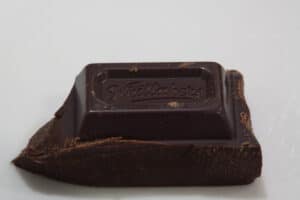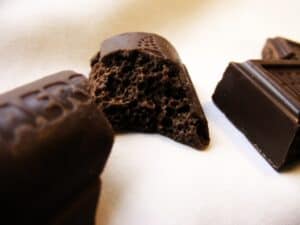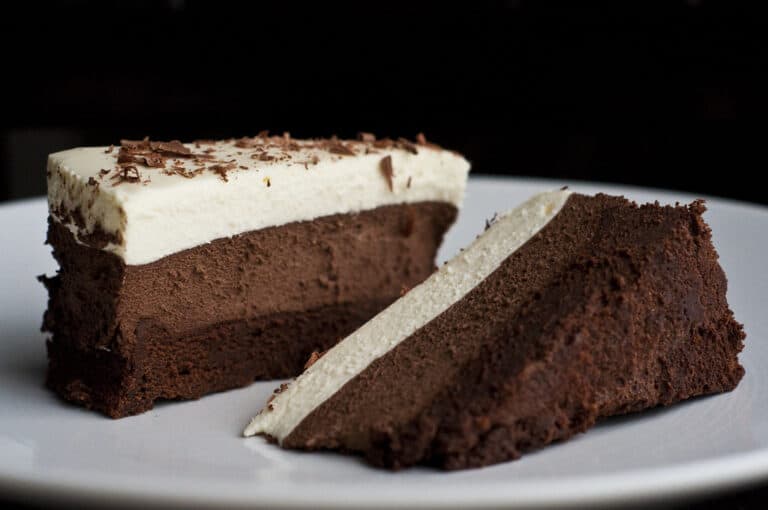Delving into chocolate in ancient civilizations, it’s fascinating to discover its roots stretch back thousands of years, long before modern confectioneries shaped our sweet indulgences. The journey of chocolate begins in the lush landscapes of South America, where cacao trees first flourished in the Andes region. But it’s not just the geography that’s intriguing; it’s how ancient civilizations, like the pre-Olmec people of modern Mexico, crafted beverages from cacao beans as early as 2000 BCE.
These early concoctions, often blended with ingredients like vanilla or chili peppers, laid the groundwork for chocolate’s evolution. Archaeological findings, including vessels with residues of cacao, reveal that what we now relish as chocolate started as a revered drink among ancient societies. This peek into the past not only showcases chocolate’s enduring appeal but also its significant role in cultural rituals and economies across millennia.
Chocolate in Ancient Civilizations
In diving into the lore of ancient practices, I’ve found that cacao beans were much more than a culinary delight; they represented a cornerstone in the spiritual and economic frameworks of early societies. Unlike the milk chocolate and chocolate bars we’re accustomed to today, the primary product of cacao beans was a rich, frothy chocolate drink revered by civilizations like the Mayans and the Aztecs.
One of the earliest references to chocolate can be traced back to the pre-Olmec peoples in modern-day Mexico, around 2000 BCE. They crafted beverages from cacao beans, often adding vanilla or chili peppers for flavor – a technique reflecting the sophistication of early chocolate making. It’s impressive to think that the journey of chocolate began with such rudimentary yet innovative methods, leading to the dark chocolate, hot chocolate, and various chocolate coated caramels we relish today.
As I explored further, I learned that cacao trees first appeared in South America, particularly in the Andes region of Peru and Ecuador. These areas are still renowned for their contribution to the history of chocolate. The cultivation and trade of cacao beans eventually expanded to central America, laying the groundwork for cacao plantations that would feed the growing demand for this treasured commodity.
Mayan chocolate drinks, prepared from ground, roasted cacao beans mixed with water, vanilla, chili peppers, and other spices, were more than a treat. They were consumed in sacred ceremonies and offered in funeral rites, indicating the profound importance of chocolate in the social and religious fabric of these civilizations. Ancient Maya texts and artifacts suggest that chocolate was considered a gift from the gods, further emphasizing its significance beyond mere sustenance.
As I piece together the fascinating narrative of chocolate’s origins, it’s clear that its role in ancient civilizations was complex and multifaceted. From a cherished energy booster and aphrodisiac to a symbol of wealth and divine offering, chocolate’s journey through history is as rich and intriguing as the flavors we’ve come to love. The transition from cherished cacao beverages in ancient cultures to the versatile use of cacao powder, dutch cocoa, and cocoa butter in modern chocolate production illustrates a remarkable evolution of this timeless indulgence.
The History of Chocolate
Origins of Chocolate
When diving deep into the history of chocolate, it’s impossible not to start with its humble beginnings. The story of chocolate begins with the cacao tree (Theobroma cacao), originating from the rich and biodiverse regions of Central and South America. I’ve learned that the ancient civilizations of this area, including the Olmecs, revered the cacao fruit and beans, establishing a foundation for chocolate making that would influence many cultures to come.
Cacao beans were so prized that they embarked on a journey, cultivated widely in areas that eventually became known as Mayan and Aztec territories. These civilizations discovered the process of harvesting cacao pods, fermenting, and drying the cacao beans, which laid the groundwork for the chocolate drinks we’re familiar with today.
Early Uses of Chocolate
Exploring further, I found that the early uses of chocolate were quite different from the sweet treats we enjoy now. Mayan chocolate was primarily consumed as a chocolate drink, served to the elite in beautifully crafted cups. It wasn’t the milk chocolate or chocolate bars that dominate our shelves today; rather, it was a bitter concoction often enhanced with flowers or spices for flavoring. The significance of these chocolate drinks extended beyond mere consumption. They played pivotal roles in spiritual and social ceremonies, illustrating the profound cultural importance of chocolate in ancient societies.

Moreover, the evolution of chocolate use is fascinating. From being considered a form of currency among the Maya to its integration into royal courts across Europe, the journey of chocolate reflects a rich tapestry of history and transformation. Notably, the invention of the chocolate press in the early 19th century by Coenraad van Houten, which introduced Dutch cocoa by removing some cacao butter, marked a pivotal moment in making chocolate more accessible and enjoyable for the masses. This groundbreaking innovation paved the way for modern chocolate products we are familiar with, including the introduction of cocoa powder and cocoa butter in various chocolate-making processes.
As I delve further into the history and evolution of chocolate, from its ancient ceremonial roots to the industrial innovations that transformed its production, the journey of chocolate continues to unfold, revealing its significant impact on cultures and societies around the world.
Chocolate in Mesoamerica
When I explore the rich tapestry of history, the spotlight often shifts to the fascinating role of chocolate in ancient civilizations, particularly in Mesoamerica. Here, the cacao tree, or Theobroma cacao, not only flourished in the lush landscapes but also became central to the culture and economies of the powerful civilizations that thrived in this region.
Chocolate in Aztec Culture
In the grandeur of Aztec civilization, cocoa beans were more than just a dietary staple; they were a currency and a sacred offering. Delving deep into their culture, it’s evident that the Aztecs held cacao in high esteem, believing it was a gift from the gods, particularly from Quetzalcoatl, the feathered serpent deity who, as legend has it, brought the cacao tree to mankind. The consumption of chocolate drinks, often spiced with chili peppers or honey, was an affair reserved for the elite and warriors, enveloped in rituals symbolizing power and divine protection.

It’s fascinating to note how the Aztecs managed their craving for cacao despite the unsuitable conditions for growing cacao trees in the Mexican highlands. Cacao beans were a prized import, and their value exceeded that of gold. Such was the demand for this precious commodity that counterfeit cacao pods, filled with soil, surfaced in the marketplace. Chocolate, or as the Aztecs called it, “xocolatl,” was both a luxurious indulgence and a vital medium of transaction.
Mayan Rituals and Chocolate
Equally captivating is the Mayan connection to chocolate. For the ancient Maya, chocolate wasn’t just consumed in their daily lives but was revered in their spiritual and social realms. The inclusivity of chocolate in Mayan culture is striking, with everyone, regardless of their social standing, enjoying chocolate drinks alongside their meals. This democratic nature of chocolate consumption speaks volumes about its significance in Mayan life.
The ceremonial use of chocolate by the Mayans further underscores its importance. Culturally, cacao played a pivotal role in various rites of passage, from birth ceremonies to weddings, and even in funerals, acting as a bridge between the mortal world and the divine. What’s more, the Maya’s practice of anointing newborns with a mixture of cacao flowers and water signifies chocolate’s deep-rooted presence in the very fabric of their society.
This exploration into the role of chocolate in Mesoamerica unravels a compelling narrative of how cacao beans transcended their humble beginnings to become a cornerstone of ancient civilizations. The journey of chocolate, through the hands of the Maya and the Aztecs, paints a vivid picture of its evolution from a sacred offering to a sought-after commodity, laying the groundwork for the myriad of chocolate products we savor today.
Chocolate Spread Throughout the World
As I delve deeper into the history of chocolate, it becomes clear that the journey of cacao beans from the ancient civilizations of Central and South America to the global phenomenon it is today is nothing short of fascinating. Cacao trees, native to these regions, were the cornerstone of chocolate making, a process that began with the cultivation of cacao pods and spanned centuries to develop into the modern chocolate we relish today.
Following the Spanish conquest of the Aztec empire, cacao beans made their way across the Atlantic. It’s intriguing how chocolate drinks, once an exclusive prerogative of Aztec and Mayan royalty, transformed into hot chocolate savored by the European elite. The Spanish added cane sugar and cinnamon to counter the natural bitterness of cacao, creating a beverage that was entirely novel to the European palate. This adaptation marked the first significant evolution of chocolate drink recipes after their arrival in Europe.
The industrial revolution further revolutionized chocolate making. The invention of the chocolate press by Coenraad Johannes van Houten in the 19th century was a game-changer. This press could extract cocoa butter from roasted cacao beans, leaving behind a dry cake that could be pulverized into cocoa powder. This powder made it easier to create smooth, rich chocolate drinks and later became the base for solid chocolate bars by adding dried milk powder and sugar. Thus, the concept to create milk chocolate was born, marking the inception of milk chocolate as we know it.
The establishment of cacao plantations in regions like Africa and Southeast Asia helped meet the growing demand for chocolate. These plantations enabled a steady supply of cacao beans, ensuring that chocolate could transcend from a luxurious indulgence to an everyday treat for people around the world.
As chocolate continued to evolve, so did the ways in which it was enjoyed. Dark chocolate, milk chocolate, and even chocolate coated caramels became staples in households across the globe. The spread of chocolate through trading routes and colonial expansions illustrates how a single ingredient can weave through the fabric of various cultures, leaving a legacy that’s both rich and universally cherished.
Delving into the rich tapestry of chocolate’s history has been a fascinating journey. I’ve seen how it evolved from a sacred beverage in ancient Mesoamerica to a global phenomenon that delights millions. The transformation of chocolate through the centuries—shaped by cultural exchanges, technological advancements, and economic shifts—underscores its significance beyond mere taste.
It’s a testament to humanity’s ability to innovate and adapt, turning the cacao bean into myriad forms that continue to captivate our senses. As I reflect on chocolate’s journey, it’s clear that its story is far from over. It remains a symbol of luxury, comfort, and connection across the world, proving that good things truly do stand the test of time.
Frequently Asked Questions
How did chocolate reach Europe?
Chocolate made its way to Europe following the Spanish conquest of the Aztecs. The Spaniards encountered chocolate as a bitter beverage among the Aztecs and later modified it by adding sugar and spices, transforming it into a sweet delicacy enjoyed by the European elite.
What role did the industrial revolution play in chocolate production?
The industrial revolution was pivotal for chocolate production. It introduced the chocolate press, an invention that separated cocoa butter from cocoa solids, leading to the creation of cocoa powder. This innovation paved the way for the production of solid chocolate and milk chocolate, making chocolate more accessible.
How did chocolate become a global commodity?
Chocolate’s journey to becoming a global commodity involved the establishment of cacao plantations in Africa and Southeast Asia. These plantations met the rising global demand for chocolate, transitioning it from a luxury item to an everyday indulgence available to a broader audience.
Why is chocolate so popular?
Chocolate’s enduring appeal lies in its versatility and variety. The evolution of chocolate from a ceremonial drink to a solid form and eventually into diverse varieties like milk, dark, and white chocolate enables it to cater to different tastes and preferences. Additionally, its rich history and cultural integration further enhance its popularity.
What is the significance of cacao in ancient civilizations?
Cacao held significant religious, medicinal, and social importance in ancient Mesoamerican civilizations like the Maya and Aztecs. It was used in rituals, as a medicinal drink, and as a form of currency, underpinning its central role in these societies. Cacao’s deep-rooted cultural and spiritual significance set the stage for its global spread and enduring legacy.
